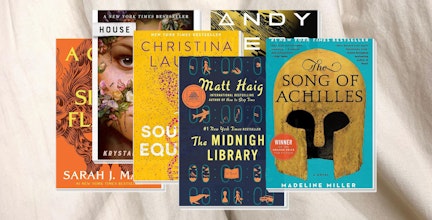The Easter Tradition that Started with an Anniversary Gift
_03202012151313.jpg?w=1110&h=550&fit=crop&auto=format)
Easter comes at a beautiful time of year. The vibrant colors of spring give the earth a rebirth. While there are many traditions centered on Easter, one, a wedding gift, offers a story rich in love and tragedy.
The story begins just before Easter in 1885 when the Russian Czar, Alexander II, and Czarina Maria of Rhine were celebrating their 20th Wedding Anniversary. It is a milestone that the Czar wants to commemorate with an amazing gift for his wife.
Maria of Rhine loved the jewelry of a young jewelry maker named Peter Carl Fabergé. Wanting to please his wife, the Czar places an order with the skilled Fabergé.
Easter morning, Fabergé arrives at the palace with his delivery. It is a simple enameled egg. Fabergé has created inside the egg a golden yolk; within the yolk a golden hen; within the hen a diamond miniature of the royal crown and a tiny ruby egg.
The Czar is so delighted with his wife’s love of the egg that he commissions an Easter egg every year from Fabergé. The Czar’s order is that each egg must be unique and must contain a suitable surprise for his Empress. Fabergé meets the challenge year after year, borrowing inspiration from the gilded lives of the Czar and Czarina.
The untimely death of Czar Alexander III leaves his son Nicolas II at the throne. Czar Nicolas maintains the traditions of his family and orders the continuation of his father’s annual commission of Fabergé Easter egg for his mother and adds a second order to be delivered to his German wife, Czarina Alexandra Fedorovna.
Each Fabergé egg depicts a different theme or event in Russia's history. In 1912, the Tsarevich egg honored the male heir to the Romanov throne. When opened, this egg revealed a portrait of the Russian prince.
In 1917, when the Tsar and his family are shot, Faberge is forced to flee Russia. It is the end of the original Faberge workshop.
As the Revolution continues, the royal palace is plundered; the Bolsheviks, package up and sell the Faberge eggs to collectors. It is an unfortunate turn of events as many of the eggs, or their intricate surprise contents, are lost. Those that still exist are primarily found in museums or in private collections like the Forbes collection. Here is a list of every Fabrege egg created (only 61 are known to still exist).






 (2)_05212015154730.JPG?fit=facearea&h=50&w=50&auto=format)



_10242023164832.jpg?max-w=432&max-h=220&fit=crop&auto=format)

_08172023152001.jpg?max-w=432&max-h=220&fit=crop&auto=format)





_01252024061712.jpg?max-w=432&max-h=220&fit=crop&auto=format)


 (6)_07082023175312.jpg?max-w=432&max-h=220&fit=crop&auto=format)
 (1)_05192023144508.jpg?max-w=432&max-h=220&fit=crop&auto=format)
 (37)_05032023114523.jpg?max-w=432&max-h=220&fit=crop&auto=format)